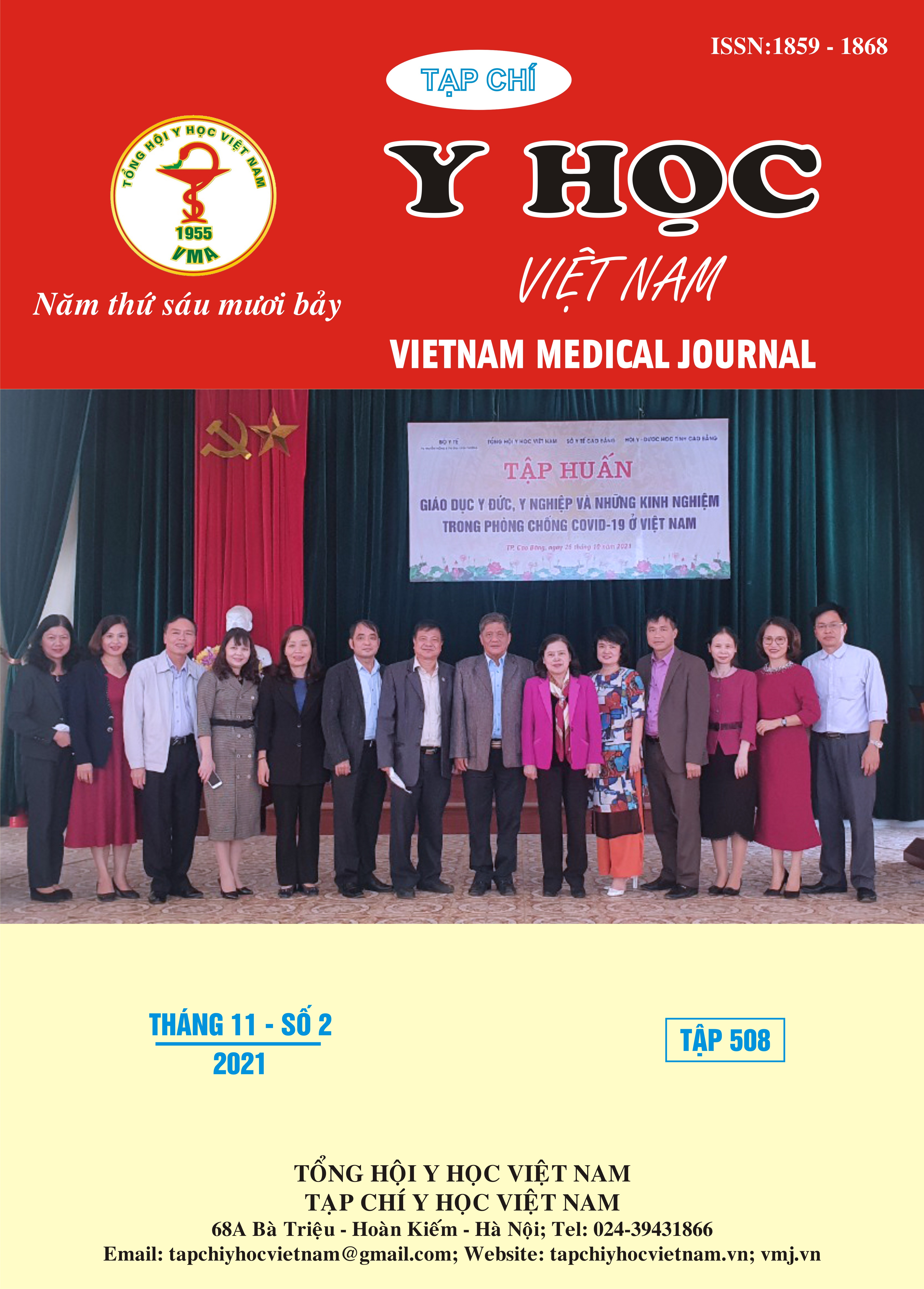DIMENSIONS FROM APICAL BONE WALLS TO ANATOMIC STRUCTURES OF THE FIRST LOWER MOLARS ON CONEBEAM CT
Main Article Content
Abstract
Objectives: The aim of the study is to determine the distances from outer and inner of bone walls to the position 3 mm from the apices and the width of lower bone at this position of the first lower molars in Vietnamese on ConeBeam CT. Methods: The study was conducted on 166 patients who had exposured using CBCT indicated by dentists in Nguyen Trai Dental CT Central, HoChiMinh City, from October 2015 to June 2016. The CBCT digital images were captures using Picasso Trio (Ewoo Vatech, Korea) with the standard conditions and postures of patients. CBCT digital images were displayed on the 14 inches flat monitor, at 1366 x 768 pixel resolution with EzImplant CD viewer software. The positions of the first lower molars were recorded. The images needed measured were converted to the original status (reset all action) with the magnification of 1.5 times. In the axial plane, the origin of coordinate axis was moved to the middle of each root of the first lower molars, so that the sagittal section line following buccal-lingual direction divided the root into relative same two parts. In the sagittal plane, the sagittal section line was adjusted following the axis of each root. In the coronal plane, some lines were drew and the dimensions were measured. Results: For the first lower molars with two roots, the distances from outer of lower bone to the mesial and distal apices at the position 3mm from the apex were 2.31±0.99 mm, 3.22±1.77 mm, respectively. For the first lower molars with three roots, the distances from outer of lower bone to the mesial, distal-buccal and distal-lingual apices were 2.41±1.09 mm, 2.22±0.98 mm and 8.66±1.23mm, respectively. Conclusion: Apecies of the mandibular first molars were located so near to the outer of lower jaw, this raised the notifications for the surgeon in endodontic surgery for these molars.
Article Details
Keywords
Distance, apical bone wall, first lower molar, ConeBeam CT
References
2. de Pablo O. V., Estevez R., Peix Sanchez M., et al. (2010), "Root anatomy and canal configuration of the permanent mandibular first molar: a systematic review". J Endod, 36(12), 1919-1931.
3. Chen Y. C., Lee Y. Y., Pai S. F., et al. (2009), "The morphologic characteristics of the distolingual roots of mandibular first molars in a Taiwanese population". J Endod, 35(5), 643-645.
4. Curzon M. E. ,Curzon J. A. (1971), "Three-rooted mandibular molars in the Keewatin Eskimo". J Can Dent Assoc (Tor), 37(2), 71-72.
5. Curzon M. E. (1974), "Miscegenation and the prevalence of three-rooted mandibular first molars in the Baffin Eskimo". Community Dent Oral Epidemiol, 2(3), 130-131.
6. de Souza-Freitas J. A., Lopes E. S. ,Casati-Alvares L. (1971), "Anatomic variations of lower first permanent molar roots in two ethnic groups". Oral Surg Oral Med Oral Pathol, 31(2), 274-278.
7. Tratman E. K. (1938), "Three rooted lower molars in man and their racial distribution". Bristish Dental Journal, 64, 264–274.
8. Gulabivala K., Opasanon A., Ng Y. L., et al. (2002), "Root and canal morphology of Thai mandibular molars". Int Endod J, 35(1), 56-62.


